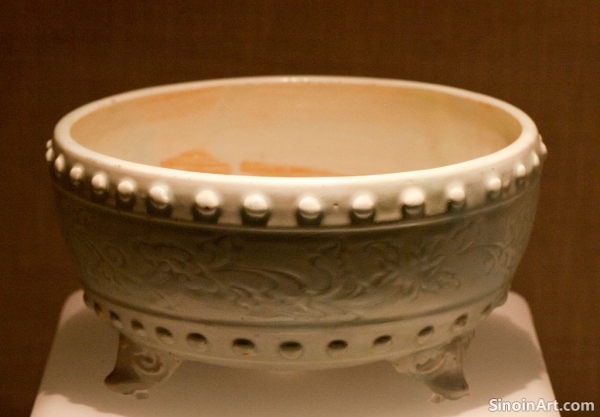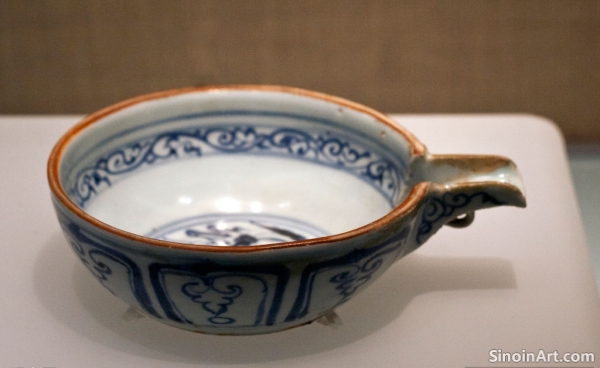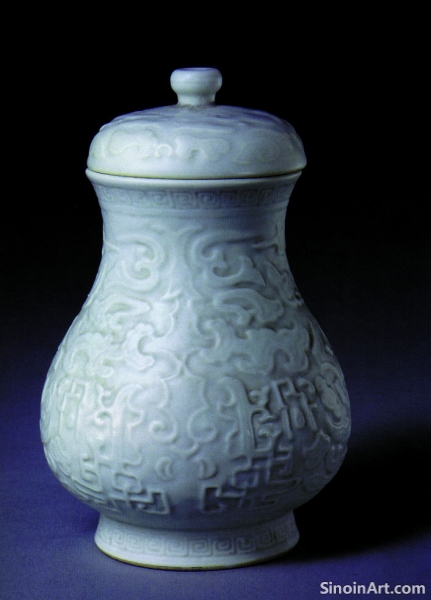The Elegance of Ding Ware: White Beauty
|
Ding ware is one of the most highly prized white porcelains of the Song Dynasty, renowned for its fine, thin body, its smooth, ivory-white glaze, and its delicate carved or impressed designs. Ding ware represents a high level of technical and aesthetic refinement and is emblematic of the Song preference for simple elegance. Ding ware is a testament to the technical skill of the potters.  Ding ware was primarily produced at kilns in Hebei province, which had access to high-quality white clay. The purity of this clay was essential to the production of the fine, white porcelain that is characteristic of Ding ware. The source clay was key to the quality of Ding ware ceramics.  The designs on Ding ware are often subtle and delicate, featuring floral patterns, cloud motifs, or simple geometric forms. These designs were often carved or impressed into the clay before glazing, creating a subtle texture beneath the smooth surface. The decorations were understated, adding to the overall elegant feel.  The forms of Ding ware were also notable for their elegance and grace, including bowls, dishes, and small vases. The smooth, often thin walls of these vessels and their refined silhouettes are still admired today. The forms highlight the delicate nature of the wares. The enduring appeal of Ding ware lies in its pure, understated elegance, its exquisite craftsmanship, and its embodiment of the aesthetic ideals of the Song Dynasty. The impact of Ding ware on later ceramic styles is significant and continues to be appreciated today. The understated beauty of Ding ware makes it highly sought after. |
Tag : Ding ware, Song Dynasty porcelain, White porcelain, Chinese ceramics, Ding kilns
Related information
- The Delicate Beauty of Ru Ware Porcelain
- The Refinement of Song Ceramics: An Introduction
- Blackwares of the Song Dynasty: Jian and Beyond
- The Role of Kilns in Song Ceramic Production
- The Simplicity and Elegance of Song Celadons
Ru ware, produced for a short period during the late Northern Song Dynasty, is among the rarest and most highly valued of all Chinese ceramics. Known for their delicate bluish-green celadon glaze, often described as the color of "sky after rain," Ru ware pieces are celebrated for their understated elegance, simple forms, and subtle crackle patterns. They are highly sought after by collectors and admired for their timeless beauty.
Song Dynasty ceramics (960-1279) represent a golden age of Chinese pottery, marked by refined techniques, elegant forms, and a focus on monochrome glazes like celadon, showcasing subtle beauty and technical mastery.
Song Dynasty blackwares, including Jian and Jizhou, feature diverse and artistic dark glazes like "hare's fur," “oil spot,” and decorative techniques, showcasing the range and creativity of Song potters.
The technological advancements in kiln construction and firing techniques during the Song Dynasty were crucial to the high quality and wide variety of ceramic wares produced during the period. The use of specific kilns was essential to the production of the unique and desirable pieces that are a hallmark of the Song era.
The Song Dynasty is often regarded as the golden age of Chinese ceramics, and Song celadon stands as a pinnacle of ceramic artistry. Characterized by its subtle green hues, ranging from pale jade to deep olive, Song celadon is celebrated for its elegant forms, smooth glazes, and understated decoration. Unlike the vibrant, multi-colored wares of the preceding Tang Dynasty, Song celadons embraced simplicity and a harmonious balance between form and glaze. The focus shifted to the intrinsic beauty of the material and the nuanced shades achieved through masterful kiln firing.